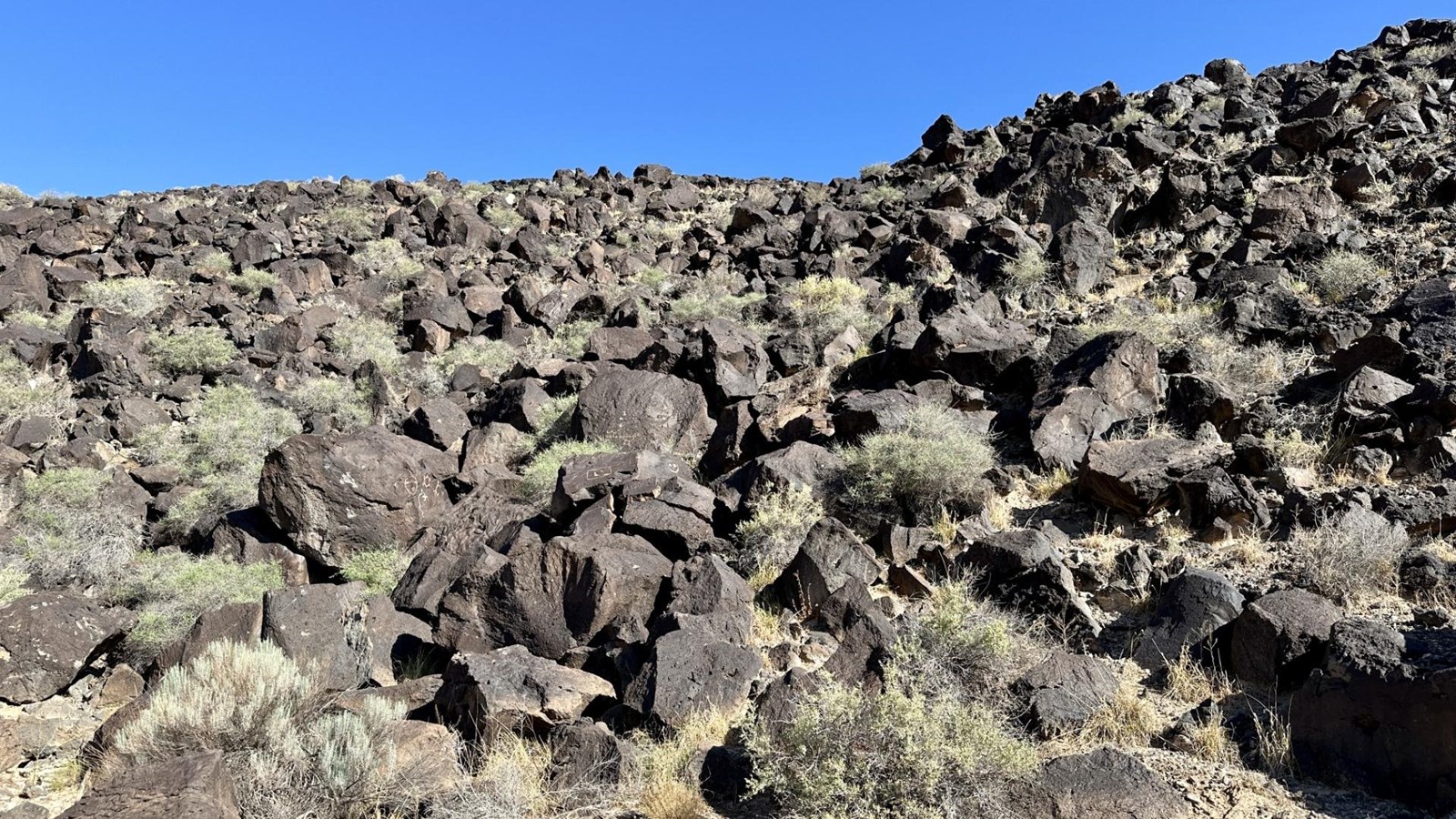Last updated: September 25, 2023
Place
Rinconada Canyon Stop 8

NPS Photo
Audio Description, Cellular Signal, Scenic View/Photo Spot
Audio Tour Stop #8: The Rio Grande Style
(1 mile / 1.6 km – boulder corner mask)
You have hiked one mile or 1.6 kilometers. The concentration of petroglyphs becomes denser as you move towards the back of the canyon. Archaeologists refer to these images as being made in the Rio Grande style. This style developed rather suddenly around the year 1300, coinciding with a dramatic increase in the local population and the construction of many pueblo villages in the Rio Grande valley. Elements frequently seen in the Rio Grande style include human figures, animals, and geometric designs. In addition, Rio Grande style petroglyphs often incorporate the three-dimensional attributes of the rocks that the image is carved into. The mask petroglyph on the corner of the boulder in front of you is an excellent example of incorporating the 3D attributes of the rock. Another example of using the natural features of the rock is how the air bubbles can be used as facial features such as eyes, nose, or a mouth.
While there are over 20,000 petroglyphs carved along the 17-mile or 27.3 kilometers volcanic escarpment, the Ancestral Puebloans did not live here. They lived in multi-storied adobe villages along the Rio Grande River, approximately 2 miles or 3.2 kilometers east of Rinconada Canyon. Between the years 1300 and 1540, approximately 15 pueblos were built on both the east and west banks of the Rio Grande River between Bernalillo and Belen, a distance of about 40 miles or 64.3 kilometers. Archaeologists estimate that populations ranged from 100 – 600 people in each of these pueblos.
